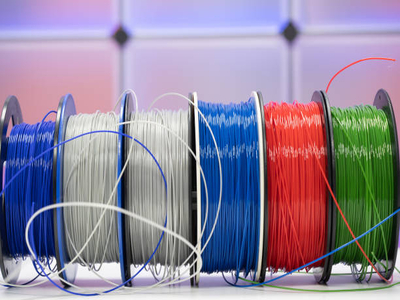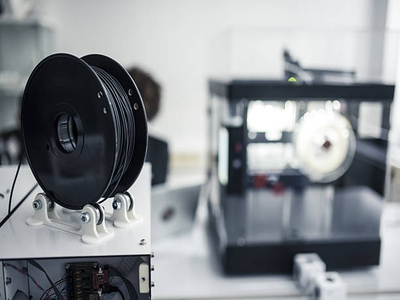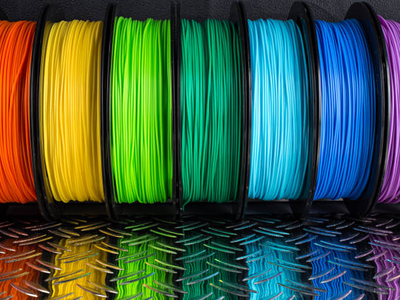When you’re printing with PETG filament, it’s essential to make sure that the filament is completely dry before you start printing.
If the filament is not dry, it can cause problems with your printer and adversely affect the final print quality.
In this blog post, we’ll discuss how to dry PETG filament so you can avoid any problems and get great prints every time!
What is PETG Filament?

PETG filament is a strong, durable, and heat-resistant material ideal for a wide range of applications.
It is often used in the food and beverage industry due to its FDA approval and ability to be recycled.
However, what happens if there are problems, like the PETG not sticking to bed? How will you proceed?
Knowing how to dry PETG filament is essential to ensure that it doesn’t absorb moisture from the air and become brittle.
There are a few different ways to dry your PETG filament, and the method you choose will depend on the type of filament you have and the amount of time you have to dry it.
Advantages of PETG
3D printing with PETG offers several benefits over other filaments, such as:
- Strength and durability
- Heat resistance
- FDA approval for food and beverage applications
- Recyclability
How To Dry PETG Filament
There are a few different ways to dry PETG filament but the most common methods are oven drying, vacuum drying, and desiccant drying.
Check out this video comparing Vacuum and Dehydrator drying for a visual representation:
Filament Dryer
Using a filament dryer is the quickest and most effective way to dry your PETG filament.
Filament dryers work by heating the filament to a specific temperature for a set period of time, removing all the moisture from the filament, and ensuring that it’s dry and ready to use.
Oven Drying
Oven drying is a popular method for drying PETG filament, as it is quick and easy to do.
To oven-dry your PETG filament, preheat your oven to between 122-140°F (50-60°C).
Place your spool of filament on an oven-safe tray or rack and leave it in the oven for around 24 hours.
Vacuum Drying
Vacuum drying is another popular method to dry PETG filament.
This method works by using a vacuum chamber to remove the air from around the filament, which removes the moisture.
Vacuum drying is slower than oven drying, but it is still an effective way to dry PETG filament.
Desiccant Drying
Desiccant drying is a standard method for drying filaments, including PETG.
This method uses silica gel to absorb the moisture from the air around the filament.
Desiccant drying can take up to 48 hours, but it is still an effective way to dry PETG filament.
Heat Bed Method

Another method that can be used to dry PETG filament is the heat bed method.
This method involves heating your printer’s build plate to around 140°F (60°C) and placing your filament spool on the heated build plate.
The heat from the build plate will help to dry the filament.
Drying PETG Under the Sun
You can also dry your PETG filament by leaving it in direct sunlight for a few hours.
This is a quick and easy way to dry PETG filament, but it is not as effective as the other methods.
Food Dehydrator
It’s possible to dry PETG filament by using a food dehydrator.
This is a quick and easy way to dry PETG filament, but it is not as effective as the other methods.
Whichever method you choose, ensure that you follow the instructions carefully and dry your filament thoroughly before using it to ensure your prints are of the highest quality.
Wet PETG Filament Warning Signs
When using PETG filament, it’s important to know the signs that indicate your filament is wet.
If you see any of the following, it’s time to dry your filament:
- Warping or curling of prints
- Stringing between printed objects
- Decreased adhesion between layers
- Reduced impact resistance
- Brittleness
These are just a few indications that your PETG filament is too wet and needs to be dried.
If you notice any of these issues with your prints, it’s time to take action to dry out your filament.
Precautions You Need to Take Before Drying PETG Filament
It’s better to be safe than sorry.
So, before you start the drying process of your PETG filament, there are some things that you need to do to avoid any accidents.
- First, make sure that the area where you will be drying your filament is well-ventilated as fumes from the heated filament can be harmful if inhaled in large quantities.
- Ensure that the area is free from any flammable materials because heated filament can reach temperatures of up to nearly 400 degrees F, hot enough to ignite most materials.
- Wear protective gear such as gloves and goggles because heated filament can cause burns if it comes into contact with your skin.
Once you have taken all of these precautions, you are ready to start drying your PETG filament.
PETG Drying Times and Temperatures

PETG will start to absorb moisture from the air as soon as it is taken out of the sealed bag.
If you live in a humid environment or are printing with PETG for an extended period, store your filament in an airtight container with desiccant packs to avoid your PETG from getting wet.
The recommended drying temperature for PETG is 176-185°F (80-85°C) for 2 hours.
However, if you don’t have a drying oven, you can dry your filament using a regular kitchen oven set to its lowest setting with the door cracked open.
It will take longer to dry the filament this way (several hours), but it will eventually reach equilibrium with the surrounding air.
If you are in a hurry, you can dry PETG at higher temperatures for shorter periods.
For example, you can dry PETG at 212°F (100°C) for 1 hour. Just monitor the filament closely so as not to overshoot the desired moisture content.
It is also important to note that PETG will continue to absorb moisture from the air even after drying.
Therefore, it is best to store your filament in an airtight container with desiccant packs when not in use.
This will help keep the moisture content low and prevent your prints from warping or delaminating.
When drying PETG for the first time, it is best to use the recommended drying temperature and time so it will become completely dry and not absorb any more moisture from the air.
If you are unsure whether your PETG filament is dry, you can perform a print test.
Print a small object with your PETG filament and look for warping or delamination.
If you notice any warping or delamination, it is best to re-dry the filament before proceeding.
Conclusion
Drying your PETG filament is crucial to ensure that your prints are of the highest quality possible.
By following the simple steps outlined in this blog post, you can quickly dry your PETG filament and avoid any issues with warping or poor adhesion.
Thanks for reading and happy printing!
READ MORE